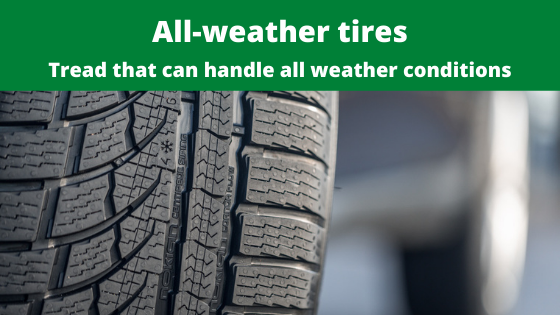Extreme winter weather warrants the use of dedicated winter tires. This means that you will change from your all-season tires to winter tires once the winter is approaching and then change back to all-season tires once the winter is coming to an end and the summer is approaching. As we all know, getting this timing correct isn’t always that easy, but this is the main idea of using two different sets of tires for covering the year with the best performance and safety. Before the winter weather arrives, you will need to have winter tires mounted. Preferably, when the temperature drops below 45°F as that is when the winter tires outperform all-season tires even in dry conditions.
With dedicated winter tires, you have both studded and non-studded options. Studded tires have metal studs protruding from the tread, which can grip the ice and provide relentless grip. The studded tires are unfortunately not allowed to be used in every state or province in North America, but they provide the best grip of any winter tire if they are allowed. They provide by far the best grip on ice, so they are perfect in areas close to large lakes or the coast, where you often have very icy conditions.
If they are not allowed, you have to choose non-studded tires, some of which use cryo crystals as gripping particles added to the tread. This will help the tires establish good traction on ice, despite not having any metal studs. It will always be mainly the tread pattern and the rubber compound that controls the grip and traction when it comes to snow. Therefore the tread pattern is similar between the two different tire types. The continuous development of non-studded tires has made them very good also on ice.
With studded tires, you have to make sure that you drive slowly when the tires are brand new, as the tires need a few weeks to set in tires so that you don’t lose them. You also have to monitor that you have a similar amount of studs on all the tires. If you find a big deviation, it is worth visiting a tire service station and let them have a look at them. Fast acceleration and braking on dry surfaces also cause heavy wear on the studs.
Since not all areas allow studded tires, you have to check before you travel somewhere that you are allowed to use them in the places where you drive. Driving with studded tires where they are not allowed can result in fines. You also have dates when you are not allowed to use them. This also applies to the areas that normally allow them to be used during the winter period, but define a date for when they can’t be used.
For more information regarding premium winter tires, visit: https://www.nokiantires.com/
